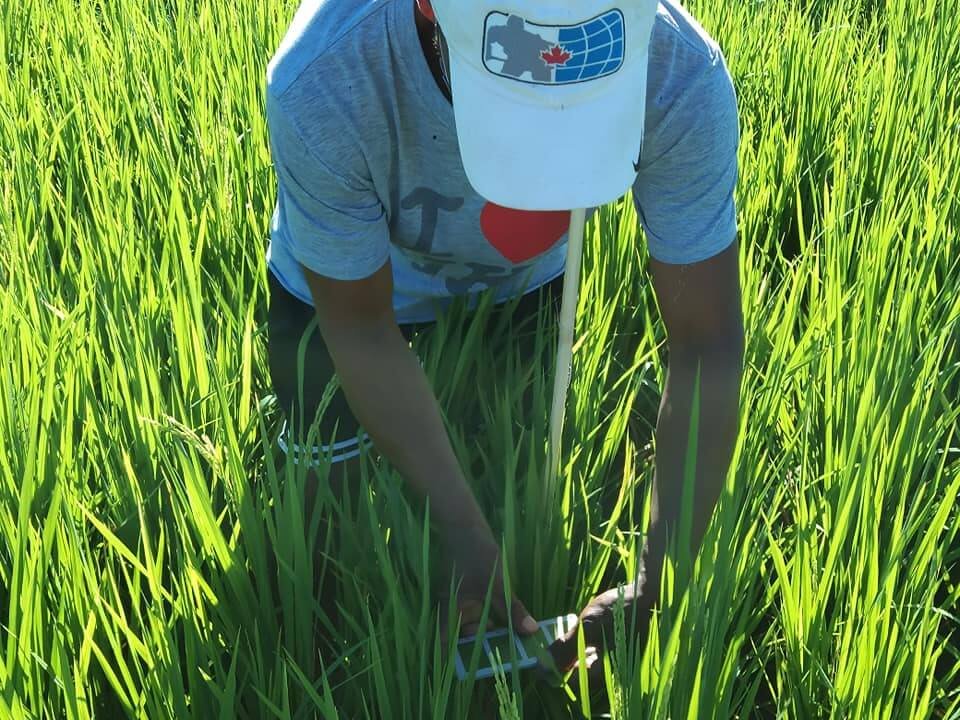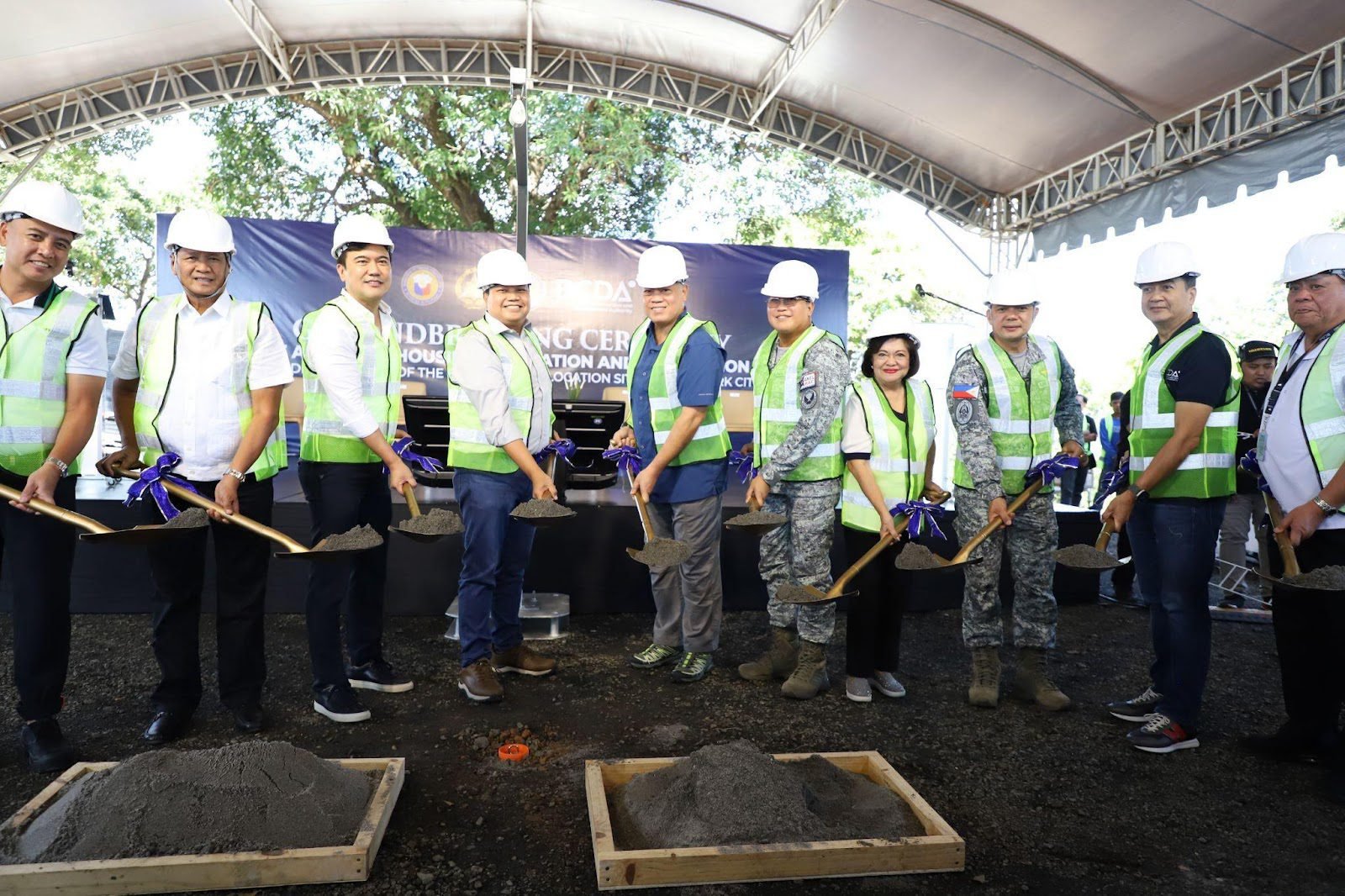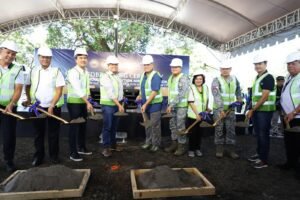Philippine Rice Research Institute (PhilRice) encourages rice farmers to make sure crops get enough nutrients to attain good yields and income.
It is important to ensure the element, amount, and timing of providing nutrients to the crop to properly implement the intervention in the farm and avoid duplication of costs.
PhilRice Nutrients Specialist Wilfredo Collado disclosed that among the nutrients that the plant needs are nitrogen which helps the rice grow quickly and potassium which improves root development.

Providing nutrients in the field also depends on the weather. During the dry cropping season, the rice plant needs more nutrients because of the sunlight it gets.
In addition, there are also nutrients coming from the soil, irrigation water, and microorganisms.
“Nutrients are sufficient if crop growth and panicle development are uniform leading to the attainment of the crop yield potential,” Collado pressed.
Rice plant lacks nutrients when it has slow growth, fewer tillers and panicles, fewer seeds, and low grain weight while excess nutrients in plants often cause easy attacks by pests and soil pollution.
As such, PhilRice advises taking steps to know the nutrient adequacy of rice crops.
There should be no symptoms of nutrient deficiency or excess from tillering to early panicle initiation and flowering.
Familiarize with the nutrients needed by rice plants based on the physical appearance and results of diagnostic tools such as Minus-One Element Technique (MOET), Leaf Color Chart (LCC), Nutrient-Omission-Plot Technique (NOPT), and Rice Crop Manager (RCM).
MOET is a soil nutrient diagnostic technology that uses a pot experiment complemented by a mobile app to determine nutrients lacking in the soil and the amount of fertilizer needed in the field.
LCC, on the other hand, can be used to check the nitrogen status of rice plants using a four-color ruler for leaf color comparison or a mobile app that takes digital photos of leaves.
Meanwhile, NOPT can be used to assess nutrient supply and serve as a basis for fertilizer recommendations.
And lastly, RCM is a management commonly used by extension workers and rice specialists who assist farmers in determining recommendations for the use of nutrients and technology in rice farming management.
“By ensuring adequate plant nutrition, high yields and profits can be ensured, as well as damage or pollution to the environment can be reduced,” Collado added.
For more information, contact the PhilRice text center hotline at 0917-111-7423, follow PhilRice TV or visit their official website: www.philrice.gov.ph (PIA 3)
PHOTO CAPTION:
𝑃ℎ𝑖𝑙𝑖𝑝𝑝𝑖𝑛𝑒 𝑅𝑖𝑐𝑒 𝑅𝑒𝑠𝑒𝑎𝑟𝑐ℎ 𝐼𝑛𝑠𝑡𝑖𝑡𝑢𝑡𝑒 𝑒𝑛𝑐𝑜𝑢𝑟𝑎𝑔𝑒𝑠 𝑓𝑎𝑟𝑚𝑒𝑟𝑠 𝑡𝑜 𝑓𝑎𝑚𝑖𝑙𝑖𝑎𝑟𝑖𝑧𝑒 𝑡ℎ𝑒𝑚𝑠𝑒𝑙𝑣𝑒𝑠 𝑤𝑖𝑡ℎ 𝑡ℎ𝑒 𝑛𝑢𝑡𝑟𝑖𝑒𝑛𝑡𝑠 𝑡ℎ𝑎𝑡 𝑟𝑖𝑐𝑒 𝑝𝑙𝑎𝑛𝑡𝑠 𝑛𝑒𝑒𝑑 𝑏𝑎𝑠𝑒𝑑 𝑜𝑛 𝑡ℎ𝑒 𝑝ℎ𝑦𝑠𝑖𝑐𝑎𝑙 𝑎𝑝𝑝𝑒𝑎𝑟𝑎𝑛𝑐𝑒 𝑜𝑓 𝑡ℎ𝑒 𝑝𝑙𝑎𝑛𝑡 𝑎𝑛𝑑 𝑡ℎ𝑒 𝑢𝑠𝑒 𝑜𝑓 𝑎 𝑑𝑖𝑎𝑔𝑛𝑜𝑠𝑡𝑖𝑐 𝑡𝑜𝑜𝑙 𝑠𝑢𝑐ℎ 𝑎𝑠 𝑡ℎ𝑒 𝐿𝑒𝑎𝑓 𝐶𝑜𝑙𝑜𝑟 𝐶ℎ𝑎𝑟𝑡 𝑡𝑜 𝑐ℎ𝑒𝑐𝑘 𝑡ℎ𝑒 𝑛𝑖𝑡𝑟𝑜𝑔𝑒𝑛 𝑠𝑡𝑎𝑡𝑢𝑠 𝑜𝑓 𝑟𝑖𝑐𝑒 𝑝𝑙𝑎𝑛𝑡𝑠 𝑢𝑠𝑖𝑛𝑔 𝑎 𝑓𝑜𝑢𝑟-𝑐𝑜𝑙𝑜𝑟 𝑟𝑢𝑙𝑒𝑟 𝑓𝑜𝑟 𝑙𝑒𝑎𝑣𝑒𝑠 𝑐𝑜𝑙𝑜𝑟 𝑐𝑜𝑚𝑝𝑎𝑟𝑖𝑠𝑜𝑛 𝑜𝑟 𝑎 𝑚𝑜𝑏𝑖𝑙𝑒 𝑎𝑝𝑝 𝑡ℎ𝑎𝑡 𝑐𝑎𝑝𝑡𝑢𝑟𝑒𝑠 𝑑𝑖𝑔𝑖𝑡𝑎𝑙 𝑖𝑚𝑎𝑔𝑒𝑠 𝑜𝑓 𝑙𝑒𝑎𝑣𝑒𝑠. (PhilRice)













